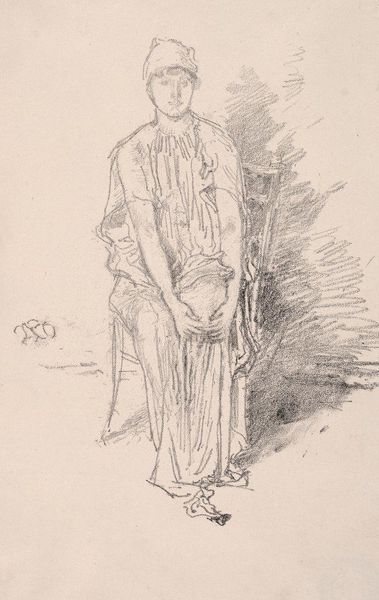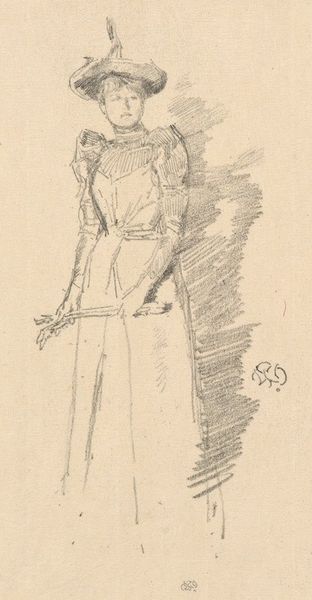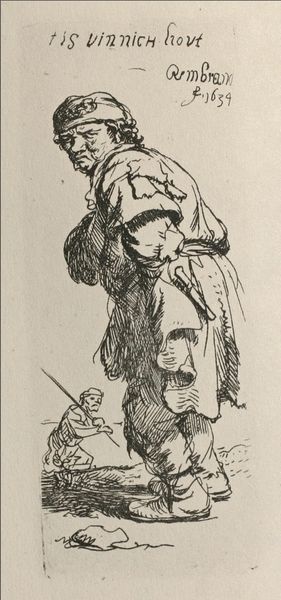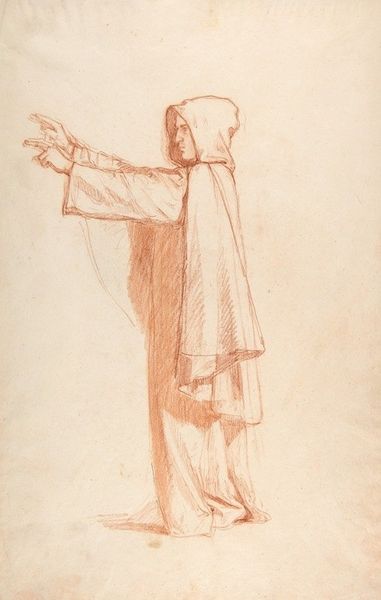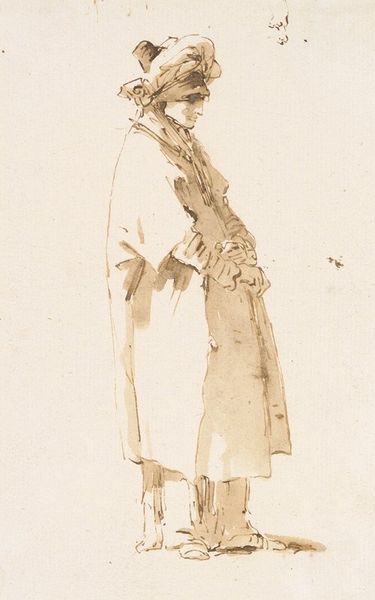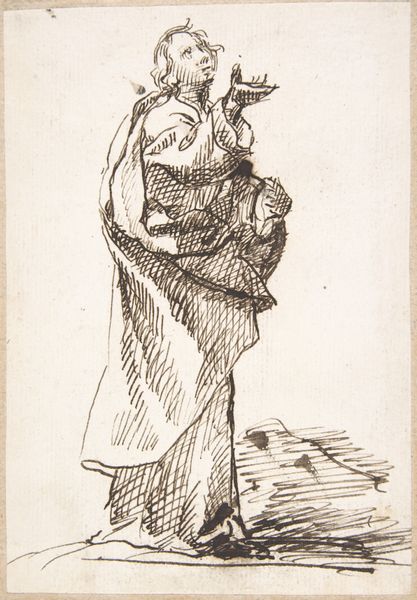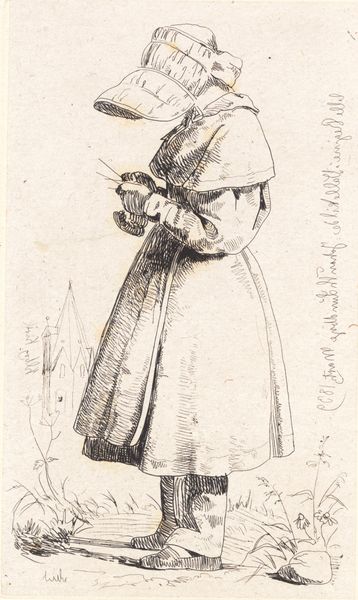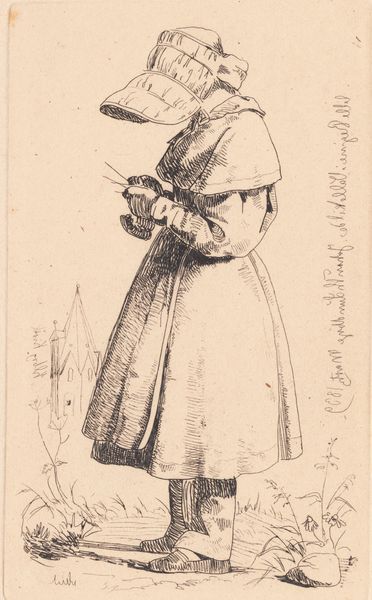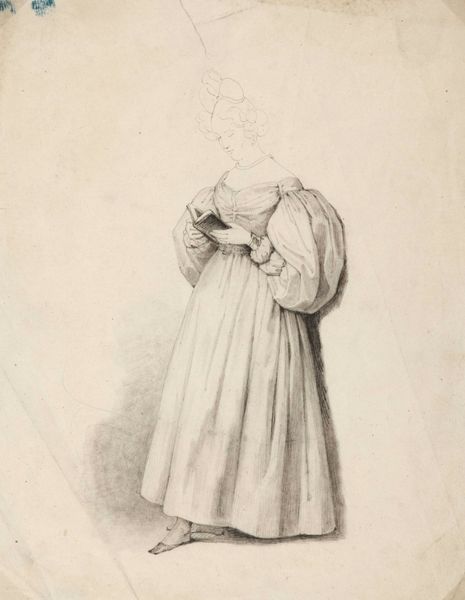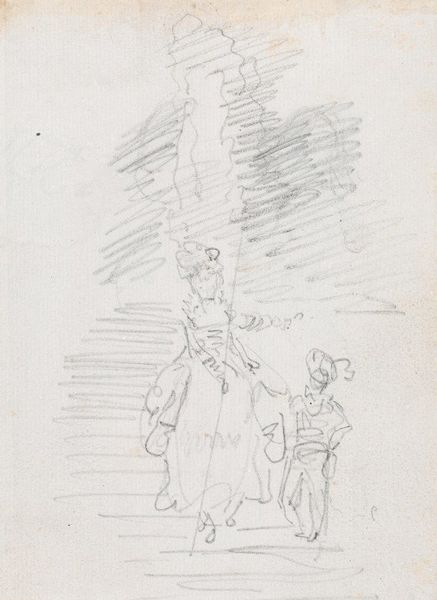
drawing, ink, pen
#
portrait
#
drawing
#
figuration
#
ink
#
pen-ink sketch
#
pen
Copyright: Public Domain: Artvee
Editor: So, this is *Ranskalainen maalaistyttö*, or *French Peasant Girl*, a pen and ink drawing by Helene Schjerfbeck from 1881. I'm struck by the immediacy of it; you can almost feel her hand moving across the page. The girl's got this...solemn look. What do you see in this piece? Curator: Well, the obvious iconography speaks of innocence and a connection to the land. Her traditional clothing roots her firmly in rural life, doesn’t it? Yet, consider that half-erased figure beside her, shrouded by lines; is it the shadow of memory, an anxiety around tradition as such? Schjerfbeck gives us more than just a pretty face here; she offers an insight into the psychology of identity at a crossroads. Do you see the ways this ‘simplicity’ is questioned? Editor: I see what you mean! The ghost-like figure could definitely hint at something deeper than just a straightforward portrait. Is that also what she is holding: is it bread? Almost an offering of life? Curator: Precisely! Bread is an incredibly loaded symbol. Think of its historical weight: sustenance, community, ritual…Now look at how the artist has rendered it with such deliberate care. The dark cloak of ink next to the figure's face adds another dimension, almost like a premonition. But also, to bring it all back, think of that earlier form. If bread connects her to tradition, how might this form suggest its dissolution, its evolution perhaps? Editor: It is thought-provoking to think that a seemingly simple sketch can reveal such complex layers of meaning. I’ll never look at a loaf of bread the same way again! Curator: Exactly! Images are rarely just what they seem, and by investigating what they symbolise we often reveal cultural anxieties that are all the more potent by being unacknowledged.
Comments
No comments
Be the first to comment and join the conversation on the ultimate creative platform.
